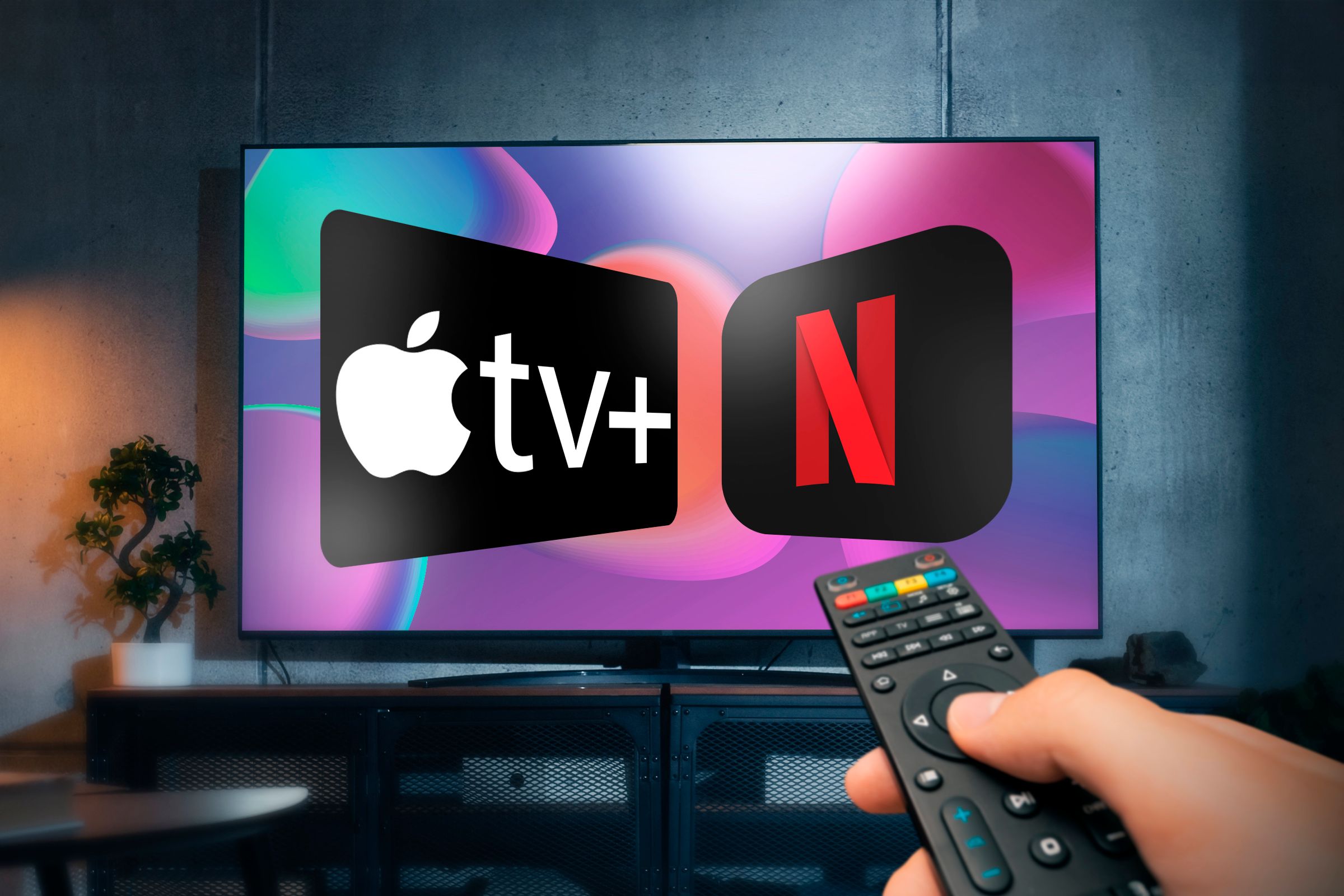Apple TV+ had a slow start, but it’s now an excellent streaming service.
Key Takeaways
- Apple TV+ offers excellent original shows and movies, attracting big-name talent, unlike Netflix’s hit-or-miss output.
- Unlike Netflix’s varied plans, Apple TV+ has a single $9.99/month tier with no ads, 4K, and the ability to share with up to five others.
- Apple TV+ provides better picture quality with higher bitrate compared to Netflix, making it great for big screen viewing.
When Apple TV+ launched in late 2019, it didn’t exactly set the world alight. Eschewing licensed content in favor of purely original programming was a bold move, but it also meant there wasn’t much to watch compared to competitors, and the slow subscriber growth reflected that.
Fast-forward to now and the situation is different. As someone who actively uses nearly every major streaming service, I’m confident in saying that Apple TV+ is excellent—better than Netflix, in fact. That might seem like a bold statement considering the ubiquity of Netflix, but here’s why.
Apple TV+ Prioritizes Quality Over Quantity
It’s undeniable that there’s massively more to watch on Netflix than Apple TV+. The former has thousands of TV shows and movies, while the latter has a few hundred. But let’s be honest, you’re not going to get through all that anyway, so it becomes a question of quality.
There was a time when the “Netflix Original” badge was a sign of prestige. House of Cards, Narcos, BoJack Horseman, and Stranger Things are all examples of early hits in Netflix’s original programming. Nowadays, it’s hit-and-miss, with plenty of duds, and shows often get unfairly canceled after a few seasons.
With Apple TV+, you can usually count on its original content to be great, attracting big-name talent across shows like Slow Horses, Severance, and Dickinson, and movies like Killers of the Flower Moon, Wolfwalkers, and Hala.
window.arrayOfEmbeds[“s6jZTQ3oc7w”] = {‘youtube’ : ‘””‘}; window.arrayOfEmbedScripts[“youtube”] = “null”;
Also, Netflix doesn’t have any Best Picture Oscar winners to its name, unlike Apple which scooped the coveted award for CODA in 2022. The streamer has also won plenty of Emmys with shows like Ted Lasso.
Of course, all of this is subjective and Apple has its share of stinkers, but in recent years I’m far more excited to watch something new on Apple TV+ than I am on Netflix.
Apple TV+ Has a Single, Reasonably Priced Subscription
Apple TV+ costs $9.99/month or $99/year in the US. With this, you can watch everything ad-free, with much of it supporting spatial audio and 4K (if you have the compatible tech). You can also share your subscription with up to five others.
There are no other tiers. It’s a single cost to experience everything Apple TV+ offers. This contrasts with Netflix, which has three plans: Standard with ads ($6.99/month), Standard ($15.49/month), and Premium ($22.99/month).
While the lowest Netflix tier is cheaper than Apple TV+, it also includes adverts and only supports simultaneous streaming on two devices. You don’t even get 4K or spatial audio unless you’re on the Premium plan—and even that only allows four simultaneous streams.
So, to reach near feature parity with Apple TV+, you need to spend more than double the amount on Netflix.
Sharing Your Subscription Is Flexible on Apple TV+
It used to be possible to share your Netflix password with others, but the company cracked down. Now, everyone streaming has to be in the same household, unless you pay to add extra Netflix members.
It’s rosier on Apple TV+. Thanks to Apple’s Family Sharing functionality, you can share your subscription with up to five others, and you can all stream different things at once. You just need to add their Apple ID to your plan. As long as everyone lives in the same country, you’re good.
There is one annoying downside to this, which is that you need an Apple device to set up Family Sharing. If you only use Apple TV+ on your smart TV and don’t have an iPhone or Mac, say, you’re out of luck. This is where Netflix gets the upper hand, since its profile management is much simpler.
Movies and Shows Look Better on Apple TV+
If you’re a stickler for visual quality, like picture sharpness and color accuracy, Apple TV+ wins. There are various factors that go into this, but a key one is bitrate—simply put, the amount of data being transferred per second. The higher the bitrate, the more data being transferred, and therefore the better the picture looks. This means you can truly appreciate the high-budget thrills of shows like Masters of the Air.
window.arrayOfEmbeds[“lA-1JCRguZ0”] = {‘youtube’ : ‘””‘}; window.arrayOfEmbedScripts[“youtube”] = “null”;
The bitrate varies depending on things like your device and server load, but shows and movies basically always look better on Apple TV+ due to its consistently higher bitrate compared to Netflix (typically at least double).
If you do most of your watching on your phone while commuting, this won’t matter to you. But if you like the big screen experience, you’ll definitely notice the difference when comparing the picture quality of Apple TV+ to Netflix.
You Can Try Apple TV+ for Free
If you’re intrigued by Apple TV+ and want to try it out, you don’t need to hand over any money. That’s because it offers a seven-day free trial, without restrictions. You can watch whatever you want, as much as you want, on any device.
Even better, if you sign up for Apple One (Apple’s subscription bundle), you get one month free. Or if you’ve bought an Apple device in the last 90 days, you get three months free. Alternatively, if you have the Apple Music student plan, it comes with a full subscription to Apple TV+ at no extra cost.
Compare that to Netflix, which has no free trial. The only way to experience it is to pay for a month, so you’ll need to remember to cancel your Netflix subscription if it doesn’t take your fancy.
Still not convinced that Apple TV+ is better than Netflix? That’s totally fine! I use both happily, even though I favor one over the other.
If you want to be cost-effective, you should switch between streaming services every couple of months anyway; that way you’re not paying for something you use infrequently.


دیدگاهتان را بنویسید